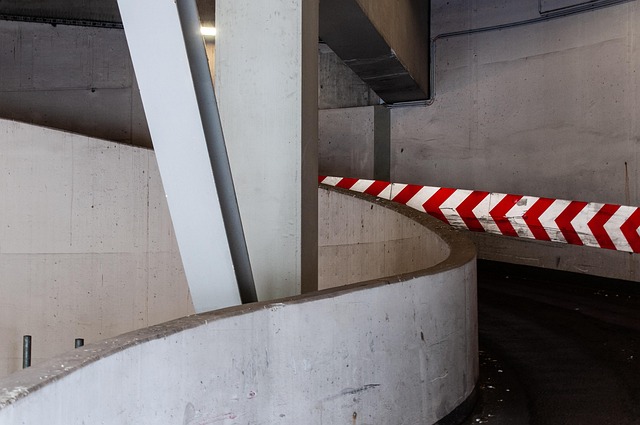Exploring professional driveway design involves understanding diverse pavement materials (concrete, asphalt, cobblestones) and styles, from simple geometrics to complex designs. Key considerations include textures, colors, drainage systems, slope, and access points for safety, functionality, and aesthetics. The installation process begins with preparation, a base layer, and specific laying techniques tailored to each material. Regular maintenance, including cleaning, sealing, crack filling, and proper drainage, ensures longevity. Custom driveway design enhances property value, curb appeal, and includes unique elements like patterns, edging, and lighting. Driveway paving offers safety, smoothness, durability, and easy vehicle maintenance.
Transform your property with professional driveway design and installation. This comprehensive guide explores various driveway paving materials and styles, offering insights into creating a robust and aesthetically pleasing entrance. From understanding different pavers to selecting the perfect design, we break down the process step-by-step. Learn essential maintenance tips to ensure longevity and discover how custom driveway design can enhance your home’s curb appeal. Master the art of driveway paving for both functionality and style.
- Understanding Driveway Paving Materials and Styles
- The Installation Process: Step-by-Step Guide
- Tips for Maintaining a Long-Lasting Driveway
- Enhancing Your Property with Custom Driveway Design
Understanding Driveway Paving Materials and Styles

When considering professional driveway design and installation, understanding the diverse range of driveway paving materials and styles is paramount. Options vary from traditional concrete to sleek asphalt, each with unique aesthetics and durability traits. Concrete drives offer a robust, long-lasting solution, ideal for creating a classic, timeless look. Asphalt, on the other hand, provides a cost-effective alternative known for its flexibility, quick installation, and ability to be easily repaired.
Beyond material choices, various styles further tailor driveway design to individual preferences. From straightforward, geometric shapes to intricate patterns and custom designs, options abound. Incorporating textures, colors, or decorative elements enhances curb appeal, while considering factors like slope, drainage, and access points ensures a functional and safe driving experience.
The Installation Process: Step-by-Step Guide

The installation process for a new driveway begins with meticulous preparation, ensuring the ground is clear and level. The first step involves laying down a base layer, often consisting of compacted gravel or sand, which provides a solid foundation. This crucial step ensures that the driveway can withstand the weight of vehicles and prevent future settlement issues.
Next, skilled professionals lay the chosen driveway paving material, whether it’s concrete, asphalt, or cobblestones. Each type requires specific techniques; for instance, concrete may involve pouring and smoothing the mixture, while asphalt is typically hot-laid and compacted. The final stage includes finishing touches like sealing, striping, and adding decorative elements to enhance both functionality and aesthetics. This step-by-step approach guarantees a durable and visually appealing driveway that can accommodate years of heavy traffic.
Tips for Maintaining a Long-Lasting Driveway

To ensure your newly designed and installed driveway paved with durability and longevity in mind, incorporate these essential maintenance tips into your routine. Regular cleaning is key; remove debris, leaves, and other buildup promptly to prevent damage from oil, dirt, or salt accumulation. Sealcoating, typically done every 2-3 years, creates a protective barrier against the elements, extending the life of your driveway paving significantly. Cracks should be filled immediately to avoid water penetration and further deterioration; consult with professionals about the best filler products for your specific material. Lastly, maintain proper drainage around the driveway to avert pooling water, which can weaken the structure over time.
Enhancing Your Property with Custom Driveway Design

A custom driveway design is an excellent way to enhance your property’s curb appeal and overall value. Driveway paving is a significant investment, but it offers a return in the form of improved aesthetics and functionality. With various materials, colors, and patterns available, you can create a unique entrance that reflects your style. A professionally designed driveway not only adds beauty but also provides a safe and smooth passage for vehicles, ensuring durability and easy maintenance.
Whether you opt for concrete, asphalt, or natural stone, the right design will transform your driveway into a feature of your home’s exterior. It can complement your architectural style, from modern and minimalist to traditional and grand. Customization allows for personalized elements like intricate patterns, decorative edging, or even integrated lighting, making your driveway not just a practical space but also an eye-catching part of your landscape.
Professional driveway design and installation can transform your property, enhancing curb appeal and functionality. By understanding different paving materials and styles, you can choose options that align with your aesthetic preferences and budget. The step-by-step installation guide ensures a solid foundation for long-lasting durability. Regular maintenance tips will keep your driveway in top condition, while custom design options allow you to create a unique feature that reflects your personality. Invest in your driveway’s quality, and it will serve as a beautiful entrance to your home for years to come, showcasing your excellent taste in landscaping.
